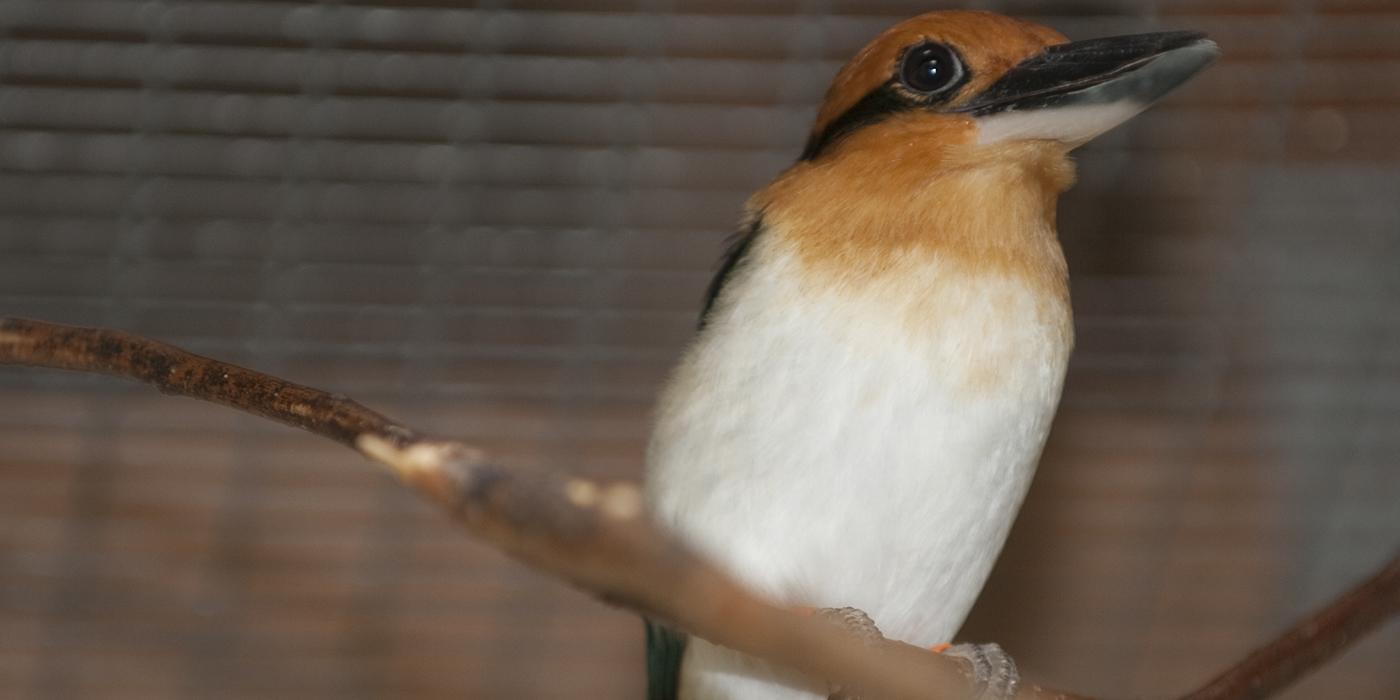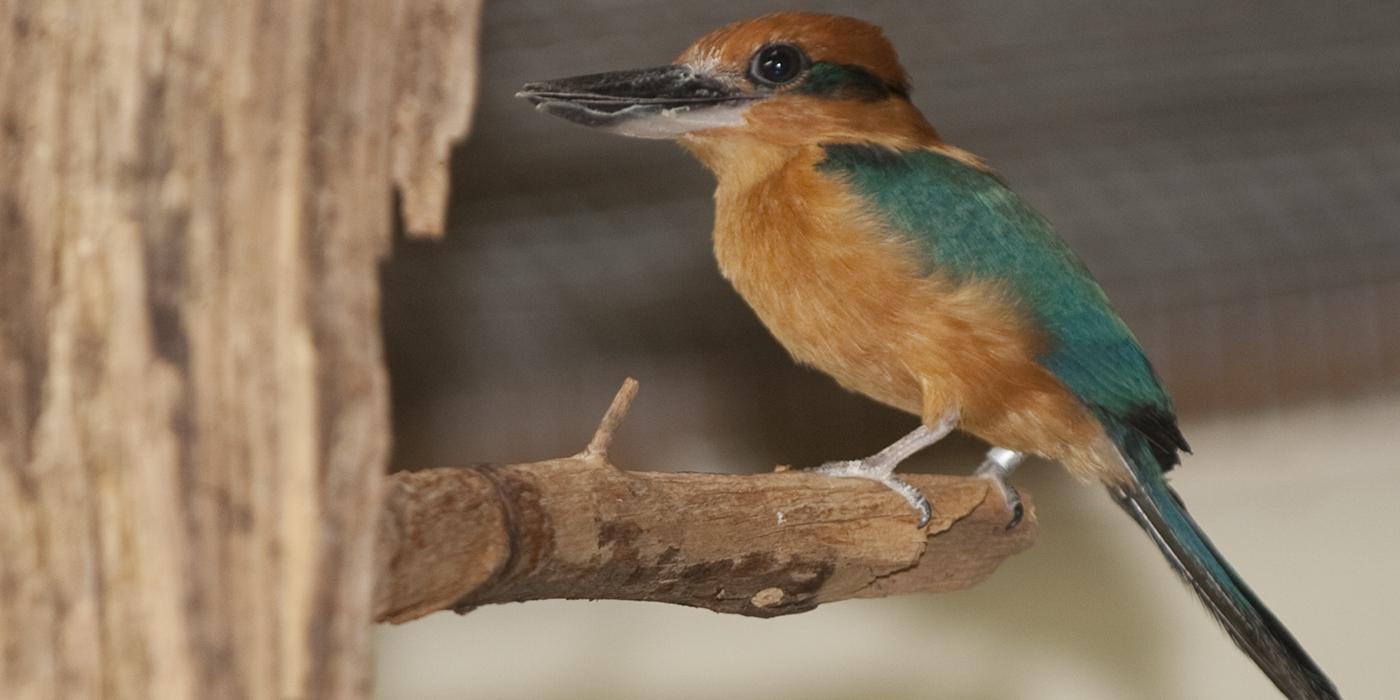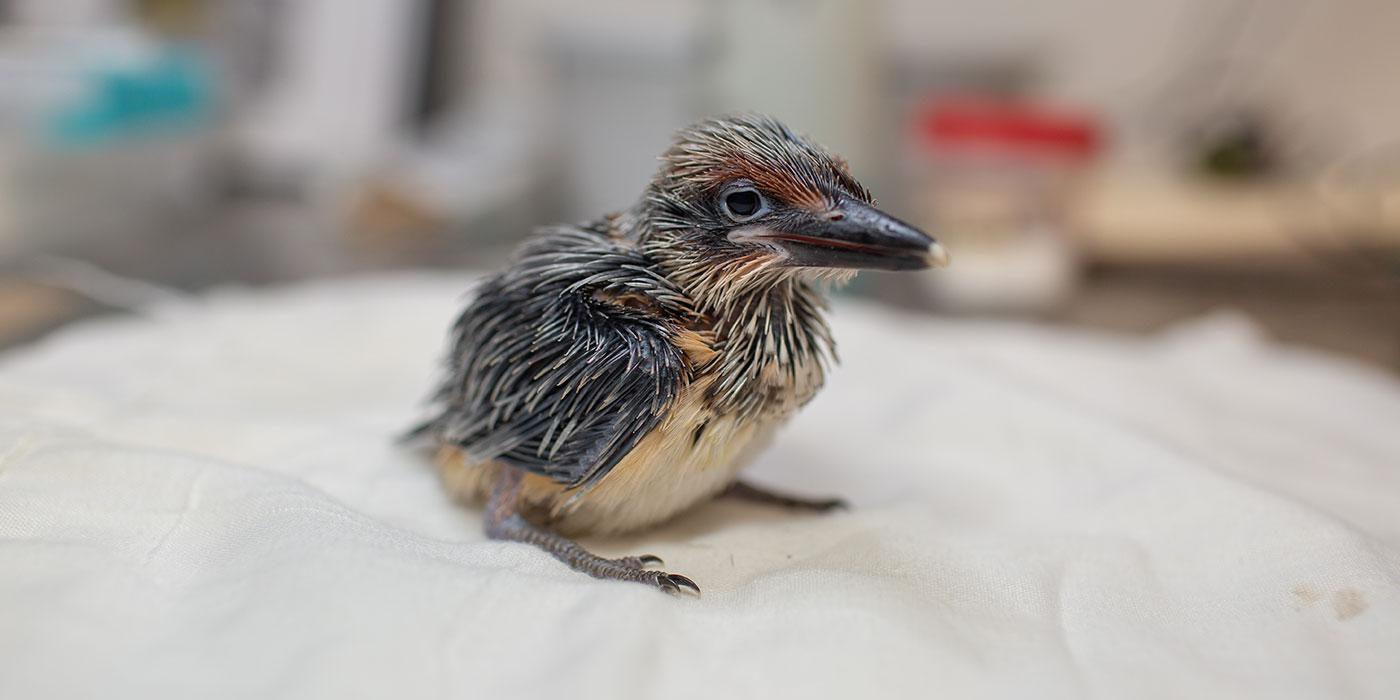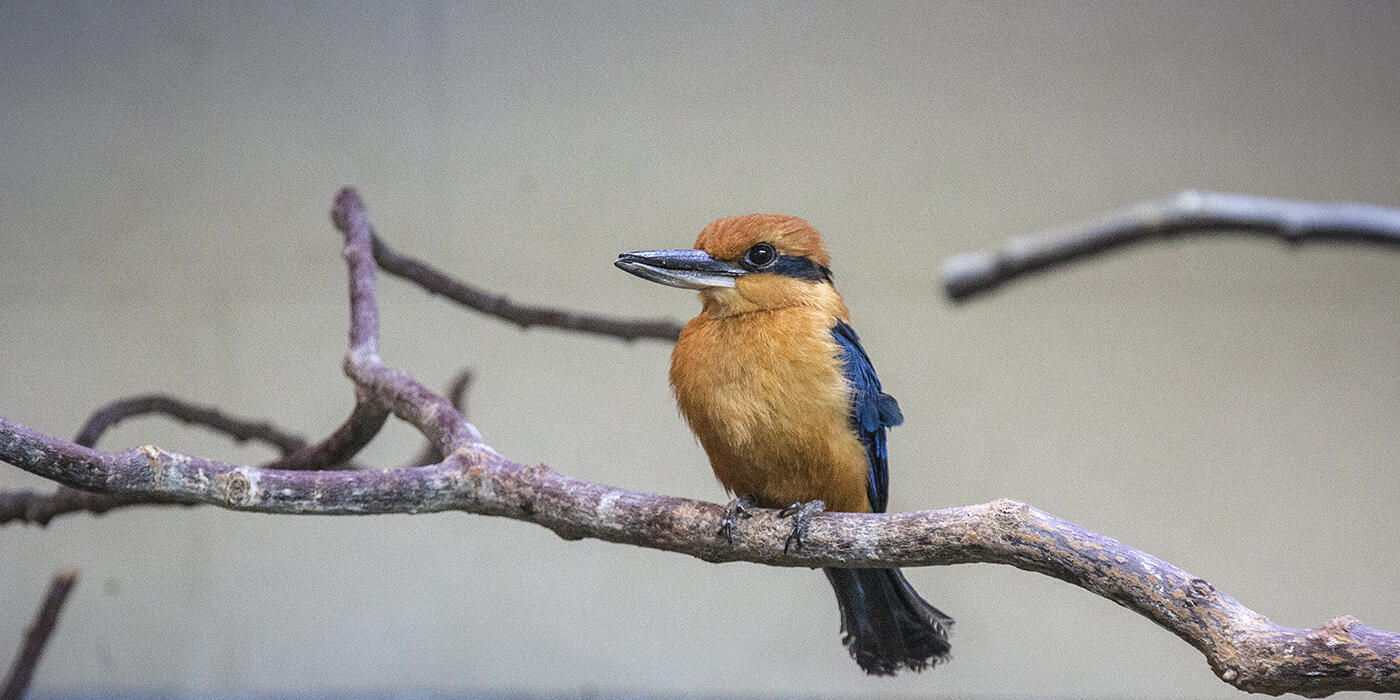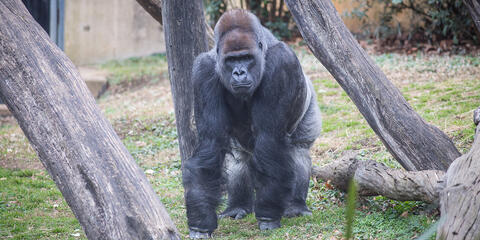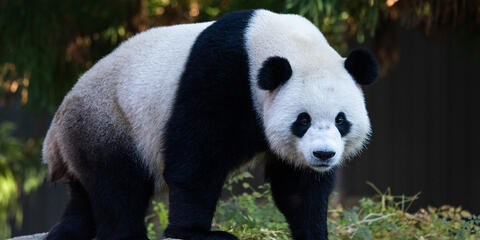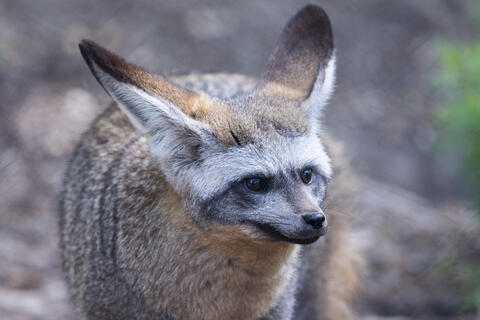Physical Description
Guam kingfishers are medium-sized birds with large heads and strong beaks. They have blue tails, and their wings are a metallic green-blue. The males have a cinnamon-brown body. Females appear similar to males but have pale white breast feathers and are slightly larger than males. Juveniles are dusty in color before their orange plumage brightens.
Size
These birds measure around 22 centimeters (9 inches) in length and weigh 50 to 70 grams (1.7 to 2.4 ounces).
Native Habitat
This species was found only on the island of Guam but is extinct there today. Historically, the Guam kingfisher occurred island-wide in all habitats, except pure savannah and wetlands, favoring woodlands and limestone forest areas for feeding and nesting. Two other similar species, Todiramphus reichenbachii and Todiramphus pelewensis are found on Pohnpei and Palau, respectively. Guam kingfishers were declared extinct in the wild in 1986, and lived in diverse habitats, including limestone forests, coastal lowlands, coconut plantations and even large woody gardens.
Lifespan
Guam kingfisher lifespan in the wild has not been documented. In human care, the lifespan is between 15 and 20 years.
Communication
The kingfisher has a loud, raspy, distinct call that generally consists of three to five harsh, loud notes, followed by several similar but much softer notes.
Food/Eating Habits
Unlike many kingfishers, this species does not rely on fish for its diet. Instead, it feeds primarily on grasshoppers, skinks (small lizards), insects and small crustaceans, which it captures on the ground. In human care, the Guam kingfisher takes its prey on the ground in the form of mealworms, crickets and anoles.
Social Structure
Kingfishers do not live in large groups. They are most often observed by themselves or in pairs. A male will defend a territory. Once paired with a female, the two birds defend their territory against other kingfishers.
Reproduction and Development
Guam kingfishers nest in tree cavities, and both sexes participate in nest selection. This seems to play an important role in their pair bonding. The male and female dig out a hole in a decaying tree 3 to 8 meters above the ground. They may excavate several holes, but they only use one to lay a clutch of two smooth white eggs. The breeding season is concentrated between Dec. and July, with both parents caring for the nest and chicks. The incubation period is 21 to 23 days. Chicks are fed by regurgitation in early stages with small food items offered thereafter. Fledging is estimated to occur at 33 days. The birds have difficulty breeding in human care, as males and females are often incompatible or incapable of raising chicks.

